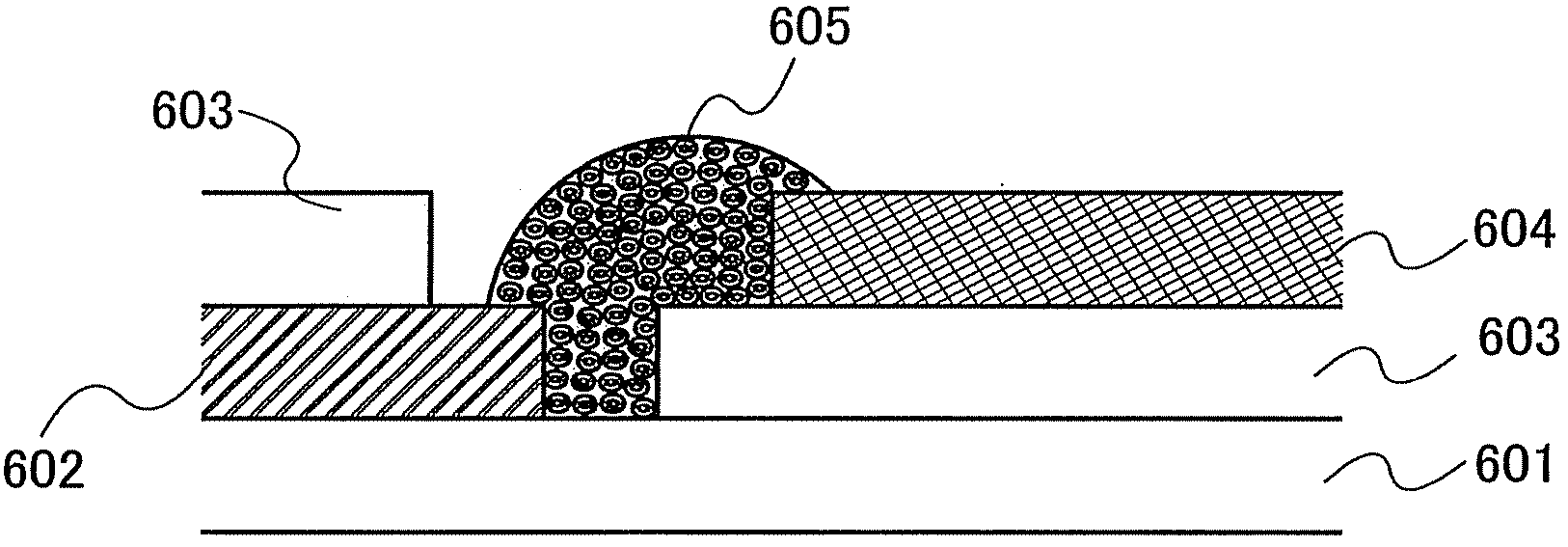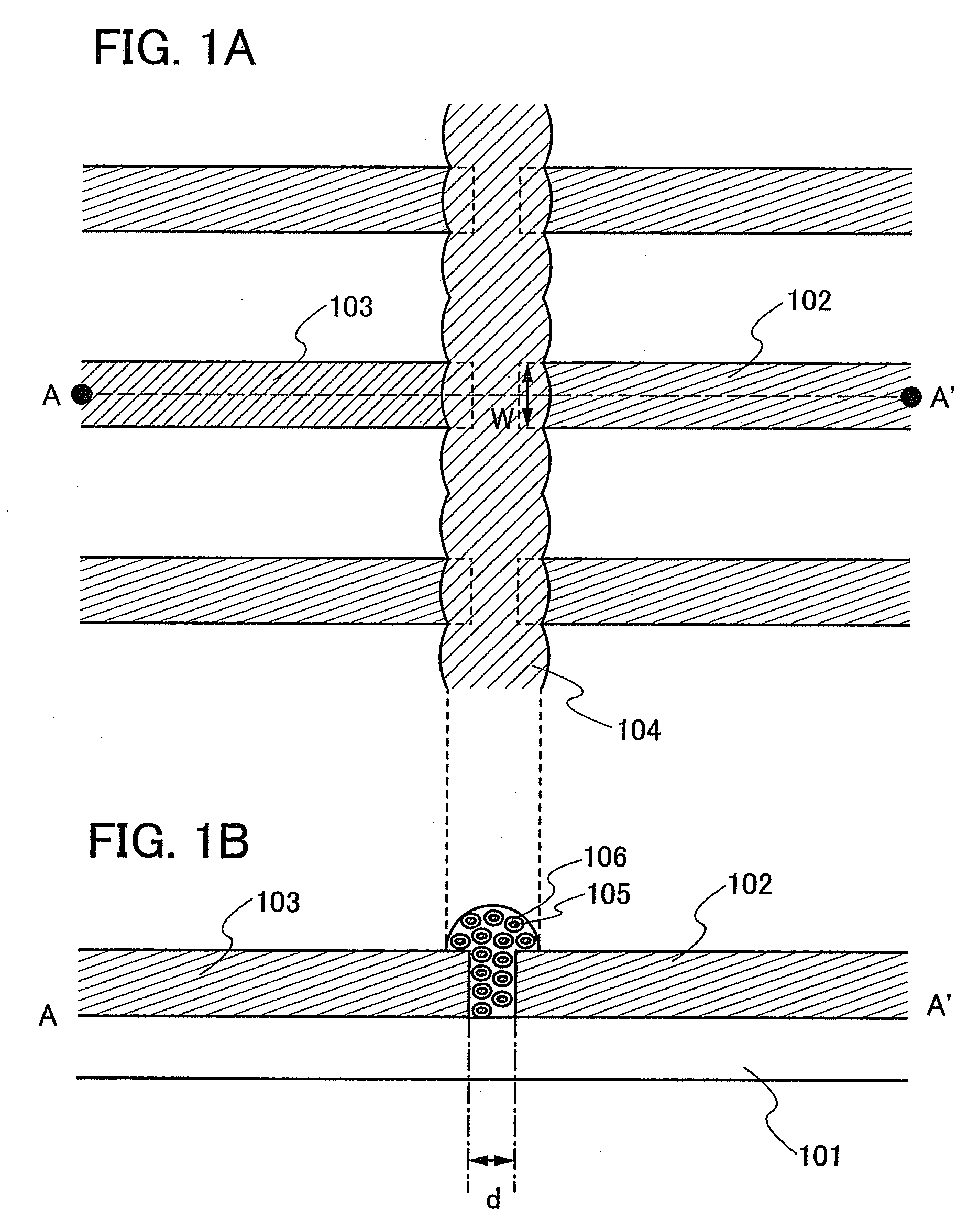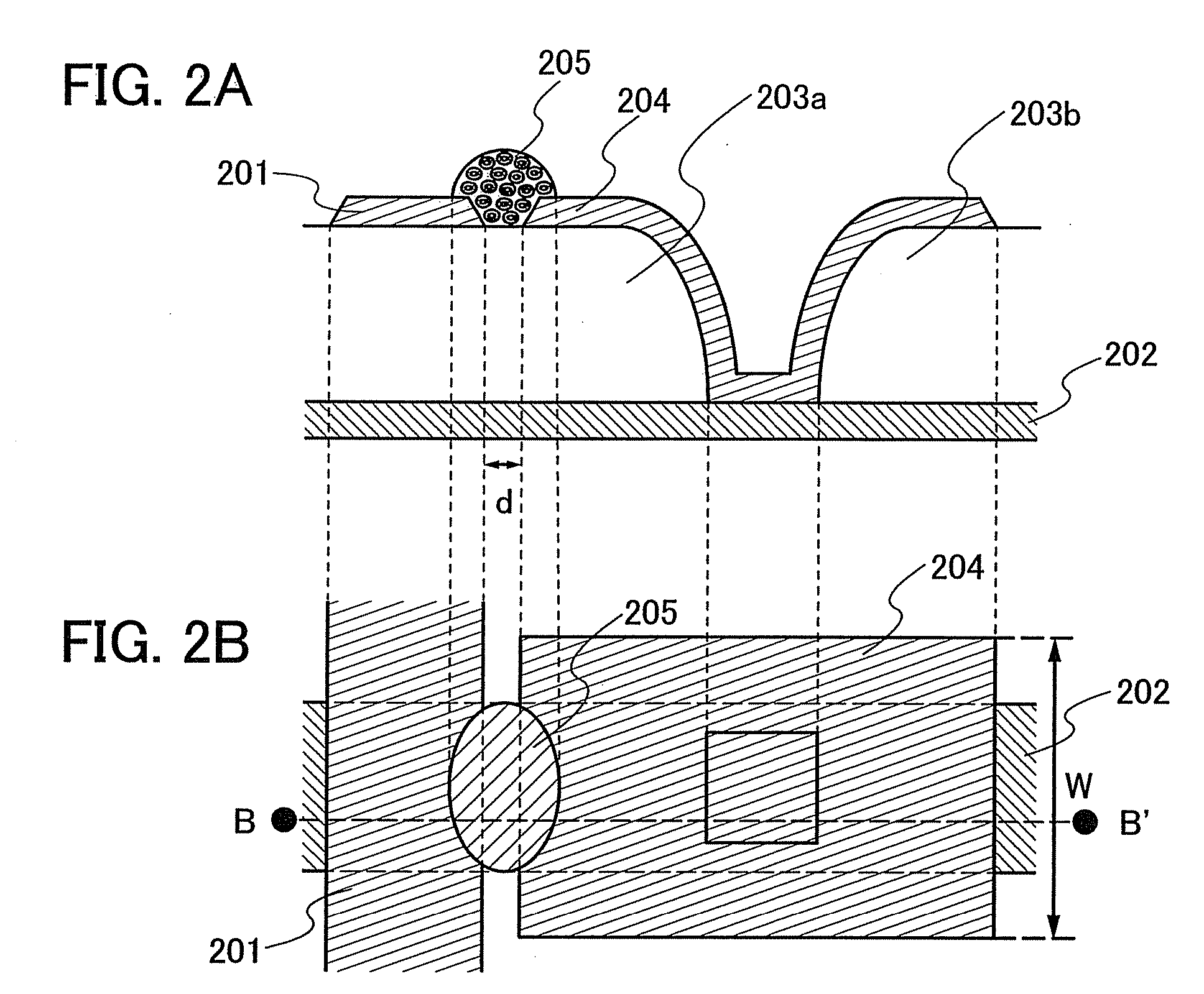Memory Element and Semiconductor Device, and Method for Manufacturing the Same
- Summary
- Abstract
- Description
- Claims
- Application Information
AI Technical Summary
Benefits of technology
Problems solved by technology
Method used
Image
Examples
embodiment mode 1
[0045]Here, an example of a semiconductor device is shown. FIG. 1A shows a top view. FIG. 1B shows a cross-sectional view taken along a line A-A′ of FIG. 1A.
[0046]In FIG. 1A, three memory elements are illustrated. Although an example of three memory elements is given here to make description simple, the number of memory elements is not particularly limited, and designers of a semiconductor device may set the number of memory elements corresponding to the desired bit number. For example, memory elements may be formed corresponding to 8 bits, 16 bits, 32 bits, 64 bits, and the like. The memory element has a structure in which a first conductive layer 102, a second conductive layer 103, and a layer 104 containing conductive fine particles deposited therebetween over a substrate 101 having an insulating surface are included as shown in FIG. 1B.
[0047]FIG. 1A shows an example in which a linear pattern of the layer 104 containing conductive fine particles is obtained by dropping of plural ...
embodiment mode 2
[0056]Here, a semiconductor device including a passive-matrix memory element is shown. The passive-matrix memory element is provided in the vicinity of an intersection portion of a bit line and a word line. FIG. 2B shows a top view, and FIG. 2A shows a cross-sectional view taken along a line B-B′ of FIG. 2B.
[0057]In FIG. 2A, a word line 202 is provided over a substrate having an insulating surface, and first insulating layers 203a and 203b are provided over the word line 202. The first insulating layers 203a and 203b each have a thickness of 0.8 to 1.5 μm in the vertical direction to the substrate surface. As the substrate having an insulating surface, a glass substrate, a quartz substrate, or a plastic substrate is used. As another substrate that can be used, a semiconductor substrate, an SOI substrate, a ceramic substrate, a metal substrate having an insulating film on its surface, or the like can be used.
[0058]The first insulating layers 203a and 203b are formed of the same mater...
embodiment mode 3
[0072]Here, an example of an active-matrix semiconductor device is shown. FIG. 3B shows a top view. FIG. 3A shows a cross-sectional view taken along a line C-C′ of FIG. 3B.
[0073]In FIG. 3A, a first insulating layer 302 is provided over a substrate 301 having an insulating surface, and a semiconductor layer 303 is provided thereovel A second insulating layer 304 is provided over the first insulating layer 302 and the semiconductor layer 303, and a word line (gate line) 305 is provided over the second insulating layer 304. A third insulating layer 306 is provided over the word line (gate line) 305, and a fourth insulating layer 307 is provided thereovel A bit line 309, a first electrode 308, and a common electrode 312 are provided over the fourth insulating layer 307. The bit line 309, the first electrode 308, and the common electrode 312 are formed of a same material. Six openings (contact holes) in total, which are pairs of right and left and reach the semiconductor layer 303, are p...
PUM
 Login to View More
Login to View More Abstract
Description
Claims
Application Information
 Login to View More
Login to View More - R&D
- Intellectual Property
- Life Sciences
- Materials
- Tech Scout
- Unparalleled Data Quality
- Higher Quality Content
- 60% Fewer Hallucinations
Browse by: Latest US Patents, China's latest patents, Technical Efficacy Thesaurus, Application Domain, Technology Topic, Popular Technical Reports.
© 2025 PatSnap. All rights reserved.Legal|Privacy policy|Modern Slavery Act Transparency Statement|Sitemap|About US| Contact US: help@patsnap.com



